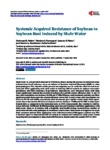Use este identificador para citar ou linkar para este item:
http://www.alice.cnptia.embrapa.br/alice/handle/doc/1036508Registro completo de metadados
| Campo DC | Valor | Idioma |
|---|---|---|
| dc.contributor.author | MEHTA, Y. R. | pt_BR |
| dc.contributor.author | MARANGONI, M. S. | pt_BR |
| dc.contributor.author | MATOS, J. N. | pt_BR |
| dc.contributor.author | MANDARINO, J. M. G. | pt_BR |
| dc.contributor.author | GALBIERI, R. | pt_BR |
| dc.date.accessioned | 2016-02-11T11:11:11Z | pt_BR |
| dc.date.available | 2016-02-11T11:11:11Z | pt_BR |
| dc.date.created | 2016-02-11 | pt_BR |
| dc.date.issued | 2015 | pt_BR |
| dc.identifier.citation | American Journal of Plant Sciences, n. 6, p. 2249-2256, 2015. | pt_BR |
| dc.identifier.issn | 2158-2750 | pt_BR |
| dc.identifier.uri | http://www.alice.cnptia.embrapa.br/alice/handle/doc/1036508 | pt_BR |
| dc.description | Shale water as a by-product obtained by Petrobras, Brazil, during the process of extraction of petroleum from fossil rock may act as an inducer of Systemic Acquired Resistance (SAR) to some plant pathogens. The objective of the present investigation was to verify the effect of seed treatment and foliar application with shale water in inducing SAR of soybean to soybean rust under greenhouse and field conditions. In greenhouse experiments, seed treatment alone with shale water significantly reduced the severity of soybean rust and the control efficiency after 11 and 14 days after inoculation was between 54.1% and 57.8%. Whereas seed treatment and only one foliar application with shale water the control efficiency due to SAR 14 and 11 days after inoculation was between 99.7% and 100%, respectively. Such treatments gave similar results under field experiments where the control efficiency of soybean rust was between 79.0% and 99.35% in shale water treated plots as compared to the untreated plots, in 2015. onsequently, this resulted in yield increase between 14.8% and 28.8% depending upon the seed treatment and foliar applications with shale water alone or in mixture with a fungicide. Seed health testing revealed lower number of seeds infected with some pathogens in treatments where either shale water or fungicide was used. Seed treatment and one foliar application were sufficient to induce SAR against soybean rust. This is the first report to demonstrate SAR of soybean to soybean rust induced by shale water. Patent regarding this investigation is deposited with Petrobras, Brazil, under the number EVP 14/022. | pt_BR |
| dc.language.iso | eng | eng |
| dc.rights | openAccess | eng |
| dc.title | Systemic acquired resistance of soybean to soybean rust induced by shale water. | pt_BR |
| dc.type | Artigo de periódico | pt_BR |
| dc.date.updated | 2017-07-25T11:11:11Z | pt_BR |
| dc.subject.thesagro | Soja | pt_BR |
| dc.subject.thesagro | Ferrugem | pt_BR |
| dc.subject.thesagro | Fungo | pt_BR |
| dc.subject.thesagro | Phakopsora pachyrhizi | pt_BR |
| dc.subject.thesagro | Doença de planta | pt_BR |
| dc.subject.nalthesaurus | Soybean rust | pt_BR |
| dc.subject.nalthesaurus | Microbial growth | pt_BR |
| dc.subject.nalthesaurus | Plant diseases and disorders | pt_BR |
| riaa.ainfo.id | 1036508 | pt_BR |
| riaa.ainfo.lastupdate | 2017-07-25 | pt_BR |
| dc.identifier.doi | 10.4236/ajps.2015.614227 | pt_BR |
| dc.contributor.institution | YESHWANT R. MEHTA, IAPAR; MARIANA S. MARANGONI, IAPAR; JANAINA N. MATOS, IAPAR; JOSE MARCOS GONTIJO MANDARINO, CNPSO; RAFAEL GALBIERI, IMA - Primavera do Leste. | pt_BR |
| Aparece nas coleções: | Artigo em periódico indexado (CNPSO)  | |
Arquivos associados a este item:
| Arquivo | Descrição | Tamanho | Formato | |
|---|---|---|---|---|
| Systemicacquired....pdf | 496.4 kB | Adobe PDF |  Visualizar/Abrir |









